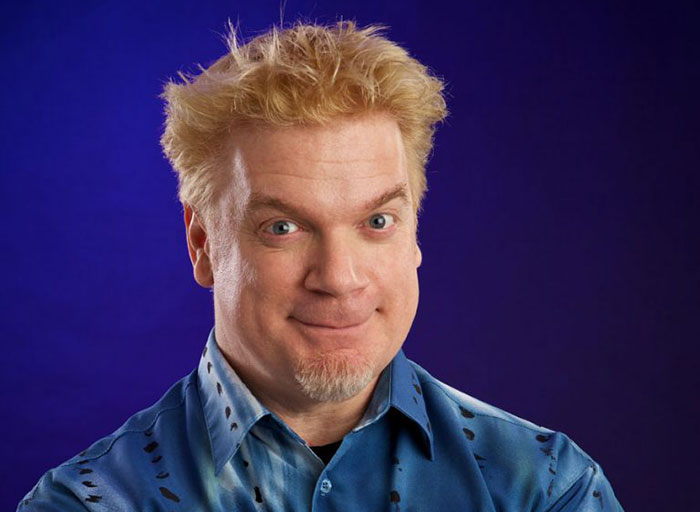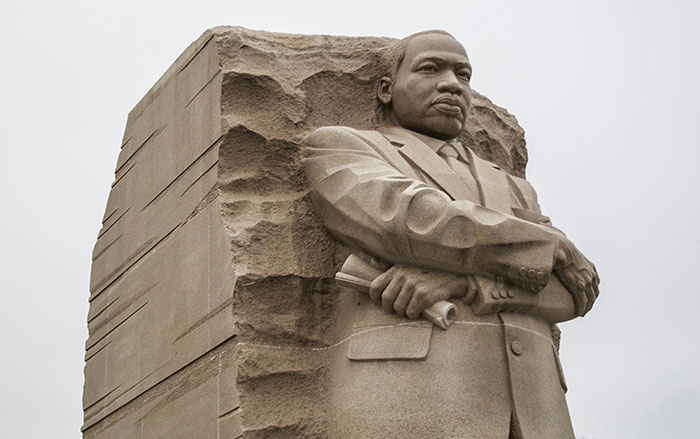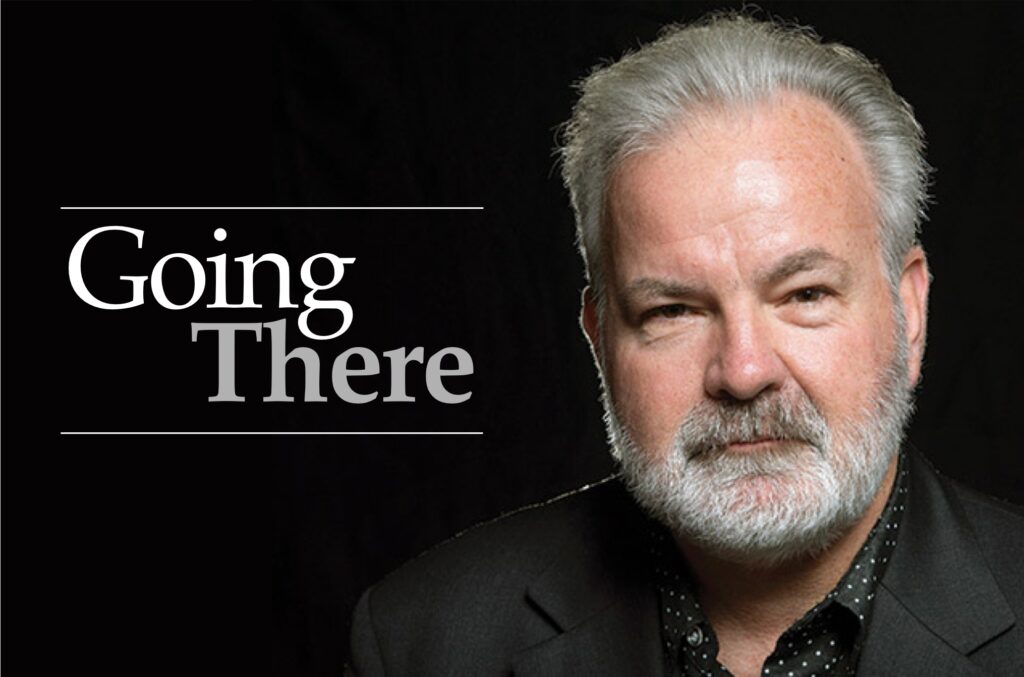Peter Harper embraces art, music, by counting his blessings
The Harper boys used to have a pretty clear division of talents.
Ben Harper, who recently joined acts like Booker T. Jones and Justin Timberlake in performing at the White House, has risen to international fame as a musician. Joel Harper, author of the children’s book All the Way to the Ocean, and proprietor of the Freedom Three publishing company, is the writer. And Peter Harper, who is known for bronze creations ranging from large-scale sculptures to belt buckles, is the artist of the family.
In truth, it’s never been that cut-and-dry.
Joel is also a musician, adept at instruments ranging from the didgeridoo to the slide guitar, and has notably collaborated with Reggae legends Burning Spear on a song about saving the oceans. Ben is not just a talented guitarist and soulful singer but also a gifted writer, as evinced by his evocative lyrics. (“We’ve been living like it’s raining/When it’s just been pouring down sun/We’ve been living as if life is over/ When it has only just begun.”)
Peter, who will hit the stage this June at Claremont’s annual Folk Music Festival, grew up in the same music-drenched atmosphere as his brothers. Their grandparents, Charles and Dorothy Chase, founded the Folk Music Center in 1958, and their mother, Ellen Chase-Verdries, manages the store today.
Still, it took him a bit longer than his siblings to cultivate a second primary form of expression.
Besides, he had plenty else to do. He had set his mind on becoming a sculptor. While at Pitzer College, he studied figurative sculpture in Zimbabwe for a year. You might think he came back steeped in the aesthetics of African art, but the experience was quite the opposite. His class had a Greco-Roman emphasis, with realism trumping expressionism.
“He was adamant about everything being proper and accurate,” Mr. Harper recalled. “If I made anything abstract, he would cut it to pieces and I’d have to go back to the drawing board.”
Once he was back in the states, attending graduate school at New York University, he relished the freedom of having a professor who “was not paying attention.”
“It wound up being great,” Mr. Harper said. “I took everything I had learned, which was important as a foundation, and began to abstract it.”
He got back to work, making piece after piece, with his sculptures growing increasingly larger and more intricate. If music was sounding its siren call, he wasn’t listening.
“I wasn’t in a place where I could switch gears. I just sculpted all the time,” he said.
Mr. Harper also branched out into bronze belt buckles, which he still makes today, with designs ranging from suns, moons and guitars to more abstract fare.
“A lot of my pieces are 4 or 5 feet tall, and casting in bronze is very expensive,” Mr. Harper said. “I wanted to make something smaller, where people can see the work, enjoy it and still walk away with something they can afford.”
Breaking the mold
He has remained prolific, sculpting and, over the last few years, embarking on a project called Faces of Life, in which he makes molds of peoples’ faces. So far, Mr. Harper has captured 270. Some of these faces belong to everyday people, “like a waiter at Canter’s just trying to make it” and an ex-convict recently released from prison. Others subjects include people who are more widely recognized, like actor Woody Harrelson and funk legend George Clinton.
He managed to capture the visage of Henry Rollins, the former Black Flag frontman who is now an activist and spoken word artist, and struck up a friendship that has lasted past the molding process. This association helped Mr. Harper coax the edgy performer to perform at this year’s Folk Music Festival.
Mr. Harper’s goal is to mold 365 faces, one for every day of the year, with a Noble Prize winner and a former president among them. He plans to cast them in bronze and showcase them in a traveling show. He envisions each face being identified by a number that exhibition visitors can use to call up a short video about the subject and their face-molding process.
Mr. Harper admits his ambitions are lofty.
“I never think of the least common denominator. If I’m going to shoot for something, I’m going to shoot for the biggest, the greatest,” he explained. “I don’t always get it, but the journey is always and inevitably phenomenal.”
Changing his tune
It may seem like Mr. Harper has more than enough on his plate between art, parenting and teaching, but all those years surrounded by musicians had more of an impact on than he knew. Four years ago, he gave into a growing hankering to play music. He knew he would need time to get good at an instrument but didn’t want to carry around something “clunky” like a guitar. So he picked up what is arguably the least intimidating of all the stringed instruments: the 4-string ukulele. Once he gained some mastery, he began writing songs.
“I took the ukulele everywhere I went,” Mr. Harper said. “When it was bedtime for my kids, I would sing the songs I had written. The kids didn’t care whether I was any good.”
One day, he was practicing when Folk Music Center employee and music teacher Jerry O’Sullivan overheard him. He asked if Mr. Harper had played the 4-string tenor guitar before, and suggested he give it a try.
“He said don’t worry about the chords; it’ll be the same chords in a different key,” Mr. Harper recalled. “I picked it up and started playing a song I had written on ukulele and it was spectacular. I though, you can play this, Wow!”
While he still plays and writes tunes on ukulele, he has found his musical soul mate in the tenor guitar.
“If you write a heartbreaking loves song on the ukulele, it still finds a way to sound a bit cheery,” Mr. Harper said. “On the tenor guitar, a heartbreaking love song sounds like a heartbreaking love song.”
When it was time for him to come out of the closet as a musician, Mr. Harper was just as worried about haring his music with Joel and his mom as he was about playing for Ben.
“My mom and brothers are so good. They are not going to say, ‘That’s great’ if it’s terrible. They’ll say, ‘That’s terrible. Keep practicing,” he said. “The first time I played a song for my mom, I was so nervous, I could hardly get through the song. It was the same for Joel.”
Mr. Harper was deeply gratified when, after he sent a couple songs to Ben, his brother said, ‘Pete, these are like real songs. They’re ready to go.’”
Although he jokes that the only one who plays tenor guitar in this day and age “is me and 3 or 4 old ladies,” Mr. Harper is now an adept tenor guitarist. Since he made his debut at a small beachside bar last Christmas, he has been honing his performing skills. He is also working on an album, which he is recording, at his brother’s invitation, at Ben’s home studio. As far as his vocals, the singing just seems to come naturally. Perhaps it’s in the genes.
Perhaps Mr. Harper’s greatest accomplishment was when his mother asked if he wanted to perform at the Folk Music Festival, a full-circle experience for the man who has been to nearly all of the past 29 festivals, often helping out selling T-shirts and other wares.
“Words don’t’ explain how lucky I am to have the mother I had,” he said. “She worked, she played music, she parented. She went back to school and got her bachelor’s degree, her master’s and her PhD. She never stopped doing the things that meant something to her.”
The Folk Music Festival will be held on Saturday, June 15 at the Rancho Santa Ana Botanic Gardens. For tickets and information, visit www.FolkMusicCenter.com. More information about Peter Harper can be found on his website www.last3rhinos.com.
—Sarah Torribio
storribio@claremont-courier.com








0 Comments